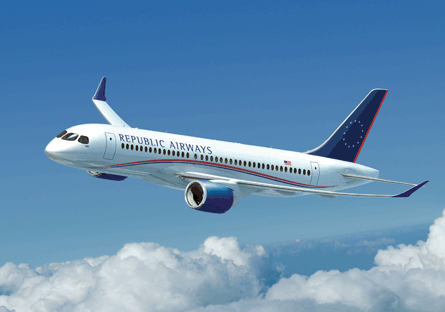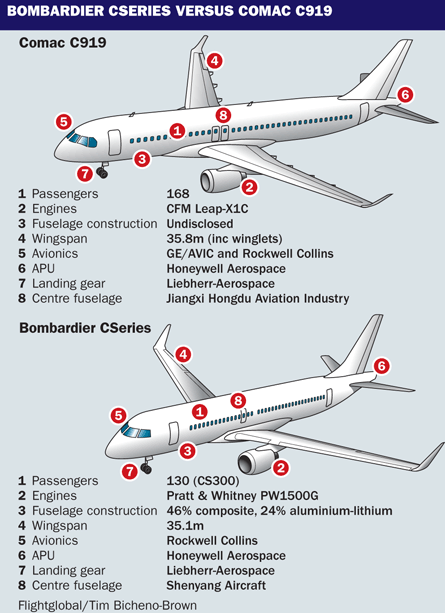Speculation that a long-range strategic relationship between Bombardier of Canada and China's Comac aims to challenge the Boeing-Airbus duopoly is fading as the realities of determining how the companies plan to grow their partnership sink in.
The manufacturers have decided to partner and explore commonalities between the Canadian-designed CSeries and the C919 developed in China in both technology and marketing and customer support. Bombardier vice-president of international development Ben Boehm says project teams are being formed to carry out commonality studies in about two months.
But until Bombardier and Comac deliver a definitive plan for their co-operation, the ambiguity surrounding their tie-up will linger.
 |
|---|
© Bombardier |
Bombardier's major rival, Embraer, generally views the new relationship between Bombardier and Comac as "a very important development for the industry", according to the Brazilian airframer's chief executive Frederico Curado.
However, noting that Bombardier is "way down the road" in CSeries development compared with Comac on the C919, Curado concludes: "It's not clear to me how they will achieve the level of commonality of integration they are talking about. So either the CSeries has to be redesigned and probably zeroed down to wait for the C919 to catch up and then somehow adapt to the C919, or the other way around."
But Boehm says a driving force behind the decision to partner is that "the development timeline of both products is still optimal to make commonality studies".
He says Bombardier and Comac have already identified a handful of suppliers common to both aircraft. Major shared suppliers for the two programmes include Honeywell and Liebherr-Aerospace, which are supplying the auxiliary power units and landing gear for each aircraft. Currently, no timeline exists to complete the commonality studies, which is leading to comparisons with Bombardier's announcement at the 2007 Paris air show of a $100 million investment in the ARJ21-900 manufactured by AVIC I.
"I haven't heard anything since then," says Forecast International aircraft analyst Douglas Royce. He adds that there is scant evidence of the ARJ21-900 being built.
 |
|---|
© Comac |
But with the CSeries just two years from service entry, the new agreement between Bombardier and Comac could unfold differently than previous tie-ups. Boehm asserts that working with Comac to offer common benefits to a future customer base "definitely won't hurt opportunities for sales in China or anywhere else in the world".
RBC Capital Markets analyst Walter Spracklin says the partnership essentially means Comac will opt not to target aircraft below 150 seats and, coupled with available funds to purchase Bombardier's products, he believes "there is an increased likelihood that Bombardier will secure a large aerospace order in the region".
If Bombardier and Comac opt to create a deep bond, Forecast International's Royce believes they could sell the CSeries and C919 as a package to meet an operator's needs in the 100- to 150-plus seat category, and give Comac a credible partner in its quest to win Western customers for the C919.
 |
|---|
A Shanghai-based analyst believes it is natural for Comac to seek partnerships with established aerospace companies. "China has a good grasp of the basic technologies when it comes to aircraft manufacturing," she says, "but they would need guidance from the established players when it comes to complex technologies."
There is a clear upside for the Chinese from the partnership in terms of accelerating the learning curve on the C919, says Embraer's Curado, but "for Bombardier it's hard to say".
The Shanghai-based analyst says there is obviously a limit to "how much they [Bombardier] will give away".
But Boehm stresses that the nascent partnership is an "agreement between two equals - it is a relationship between the third-largest OEM and the largest OEM in China".
But Forecast International's Royce says it is still tough to determine what the new relationship "actually means in concrete terms", and as a first step, he sees the agreement entailing "money flowing one way and technical knowledge flowing the other way".
Source: Flight International























